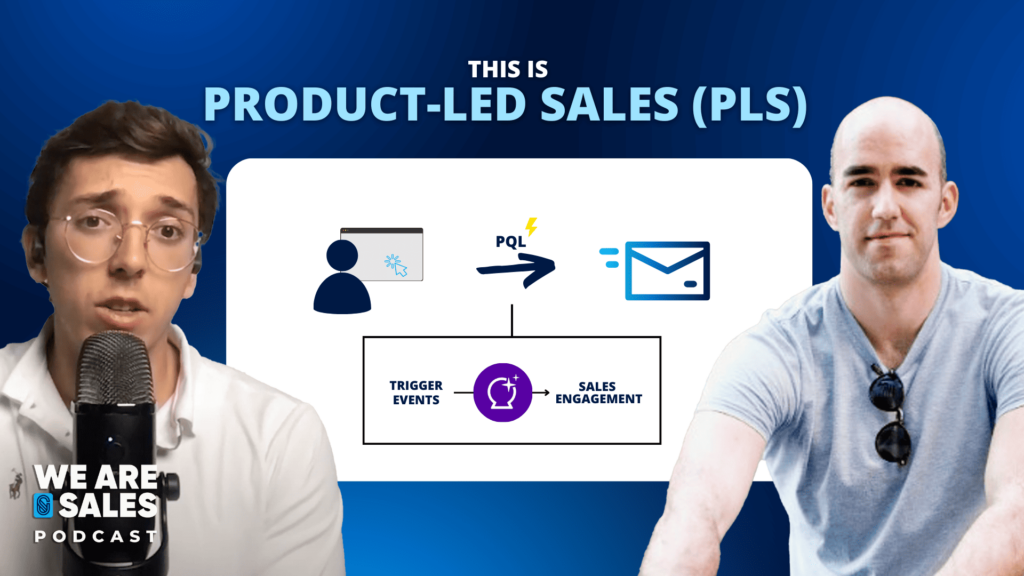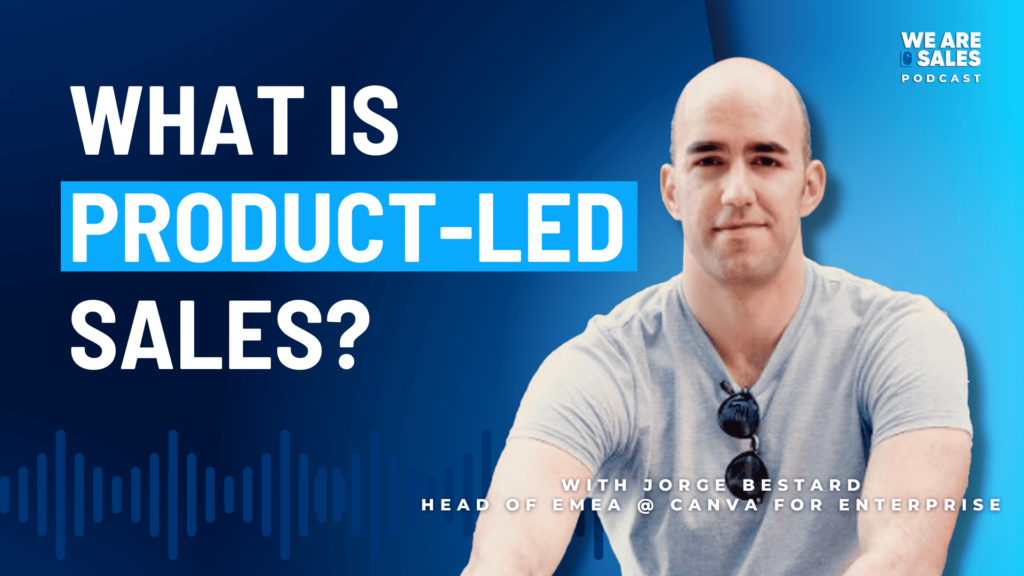Share:
What is product-led sales (PLS)?

Are you familiar with the sales motion “PLS”, product-led sales?
Many of the successful PLG companies (e.g. Canva, Slack, Calendly, Miro), eventually – and especially if the goal is to grow enterprise accounts – add a sales team to the motion. This is called product-led sales.
It is obviously different than having a purely sales-led motion. Product-led sales, or PLS, is a hybrid form of the PLG and sales-led motion.
Now, Jorge Bestard, Head of EMEA at Canva for Enterprise, has done the move from PLG to PLS at Canva. However, Jorge’s PLS-experience really started at Miro, when he used to be responsible for the UKI’s GTM.
If you want a deep dive into the concept of product-led sales, tune in here. Or, read along to get our favourite aspects of this GTM motion.
Want more articles like this one directly in your mailbox?
In my conversation with Jorge, we covered various sales leadership topics in the context of the product-led sales motion, such as: AE & CSM collaboration, sales enablement, revenue operations, but also how PLS is unique in its own way.
In this article, however, we are shining a light on what seemed to be very unique to PLS.
First, we have to understand that companies introducing PLS, by definition, stem from a PLG-motion.
This means that sales is not their strong suit yet:
Most companies moving into PLG tend to have a strong product-market fit, but not sales-market fit. Questions arise, like: is the product or service easy to buy? Do we have all sales collaterals ready for the different stakeholders on the side of the client? Is the champion able to effectively make a case for us?
People are too concerned in making sure it's highly relevant and highly connected to something that you do. You do not need that.
There is the concept of “below the line” and “above the line”. Below the line, we have the actual users. The way to expand there is to approach other teams and colleagues for them to get interested in our product as well. Above the line, we have the C-level executives. They are more concerned about the long-term impact, the roadmap of the vendor etc. This requires a more traditional sales approach.
Whoever is responsible for Revenue Operations should translate product signals into intention: what is the user trying to accomplish? If it matches with a challenge that a paid subscription can solve, this should trigger an event. When enough of such events have been triggered, a product-qualified lead gets created.
There are tools in the market that act as the bridge between product usage and a sales engagement platform (SEP), such as Outreach or Salesloft. Pocus is one of them. So, based on your definition of a PQL, it will roll out predefined plays in your SEP.
For example, it will send out an email like: “hey- i see you have been using product X in context Y; these 2 companies A & B in your vertical have been doing Z through the platform - interested in finding out more?”
Note: Don’t just say “I want to learn more about your business”. You must prove that you can add value to a potential conversation.
Lastly, just like we have misalignment between marketing and sales in a more traditional GTM motion, Jorge explained that this is also something that can occur in PLS:
There is often the assumption that sales will know perfectly what makes a PQL or that the product team will know when a PQL turns into an SQL, but from my experience, this couldn’t be further from the truth.
Hence, the importance of having very clear communication & expectation setting and, preferably, having someone responsible for the Revenue Operations as a whole.
Want more? Listen to the full interview here 👉 🎙 From PLG to PLS: how Canva has introduced product-led sales.

